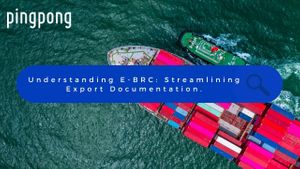In the realm of international trade, efficient documentation processes play a pivotal role in ensuring smooth transactions and compliance with regulatory standards. One such document that holds significant importance is the Electronic Bank Realization Certificate (e-BRC). In this comprehensive guide, we delve into the intricacies of e-BRC, elucidating its purpose, significance, and the streamlined procedures it offers for exporters.
What is e-BRC?
e-BRC, short for Electronic Bank Realization Certificate, serves as a vital document issued by banks in India to exporters. It validates the receipt of payment for goods or services exported from the country. Essentially, it provides authentication of foreign exchange earnings credited to the exporter's bank account.
Significance of e-BRC
The e-BRC holds immense significance for exporters due to several reasons:
Compliance Assurance
In adherence to the regulations set forth by the Reserve Bank of India (RBI), exporters are mandated to furnish e-BRCs as proof of realization of export proceeds. This ensures regulatory compliance and mitigates the risk of non-compliance penalties.
Foreign Exchange Management
For effective foreign exchange management, accurate documentation of export earnings is imperative. e-BRC facilitates the systematic recording and tracking of foreign exchange inflows, enabling better management of currency transactions.
Transparency and Accountability
By providing a transparent record of export proceeds, e-BRC enhances accountability in international trade transactions. It offers stakeholders, including regulatory authorities and financial institutions, visibility into the flow of foreign exchange earnings.
Streamlined Procedures with e-BRC
Traditionally, the process of obtaining physical copies of BRCs involved manual paperwork and prolonged processing times. However, with the advent of e-BRC, exporters benefit from streamlined procedures and enhanced efficiency.
Automated Generation
e-BRCs are generated electronically by banks upon realization of export proceeds. This automated process expedites the issuance of certificates, eliminating the need for manual intervention and reducing turnaround times significantly.
Centralized Repository
Furthermore, e-BRCs are stored in a centralized repository maintained by the RBI, accessible to authorized stakeholders. This centralized database ensures the integrity and accessibility of certificate records, simplifying verification processes for exporters and regulatory authorities alike.
Real-time Monitoring
With e-BRCs, exporters gain real-time visibility into the status of their export proceeds. They can track the processing and issuance of certificates through online banking portals, facilitating better cash flow management and decision-making.
Conclusion
In conclusion, e-BRC serves as a cornerstone in the realm of export documentation, offering exporters a streamlined and efficient mechanism for validating foreign exchange earnings. By embracing e-BRC, exporters can navigate the complexities of international trade with ease, ensuring compliance, transparency, and enhanced financial management.

